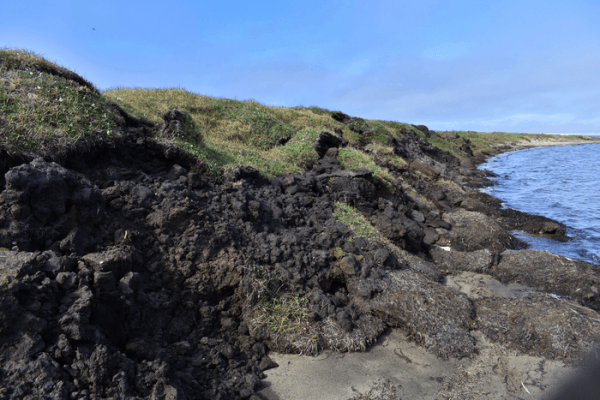In a pair of recently published papers, Michael Rawlins, a professor in the University of Massachusetts Amherst’s geosciences department and associate director of the Climate System Research Center, has made significant gains in filling out our understanding of the Arctic’s carbon cycle—or the way that carbon is transferred between the land, ocean and atmosphere. In order to better understand future trends in atmospheric carbon dioxide, and its associated global warming, we need a fuller picture of how carbon cycles between reservoirs in our world.
“There’s been a lot of research that has looked at the vertical flow of carbon from land to the atmosphere,” says Rawlins. This vertical flow includes things like burning fossil fuels, forest fires, leaking methane gas and emissions from thawing permafrost. But there’s another part of the cycle—the horizontal. “Far less attention has been paid to how carbon is transferred from land to the ocean via rivers,” says Rawlins.
As water flows over the land, into streams and rivers, it picks up carbon, eventually carrying it all the way to the sea. A small, but not insignificant amount of this dissolved organic carbon (DOC) is “out-gassed” from the river water and into the atmosphere as a greenhouse gas. What remains flows into the ocean, where it becomes a key part of coastal foodwebs.
Read more at: University of Massachusetts Amherst
Eroding cliff bluffs adjacent to Elson Lagoon near Utqiagvik, Alaska (Photo Credit: Michael Rawlins)


